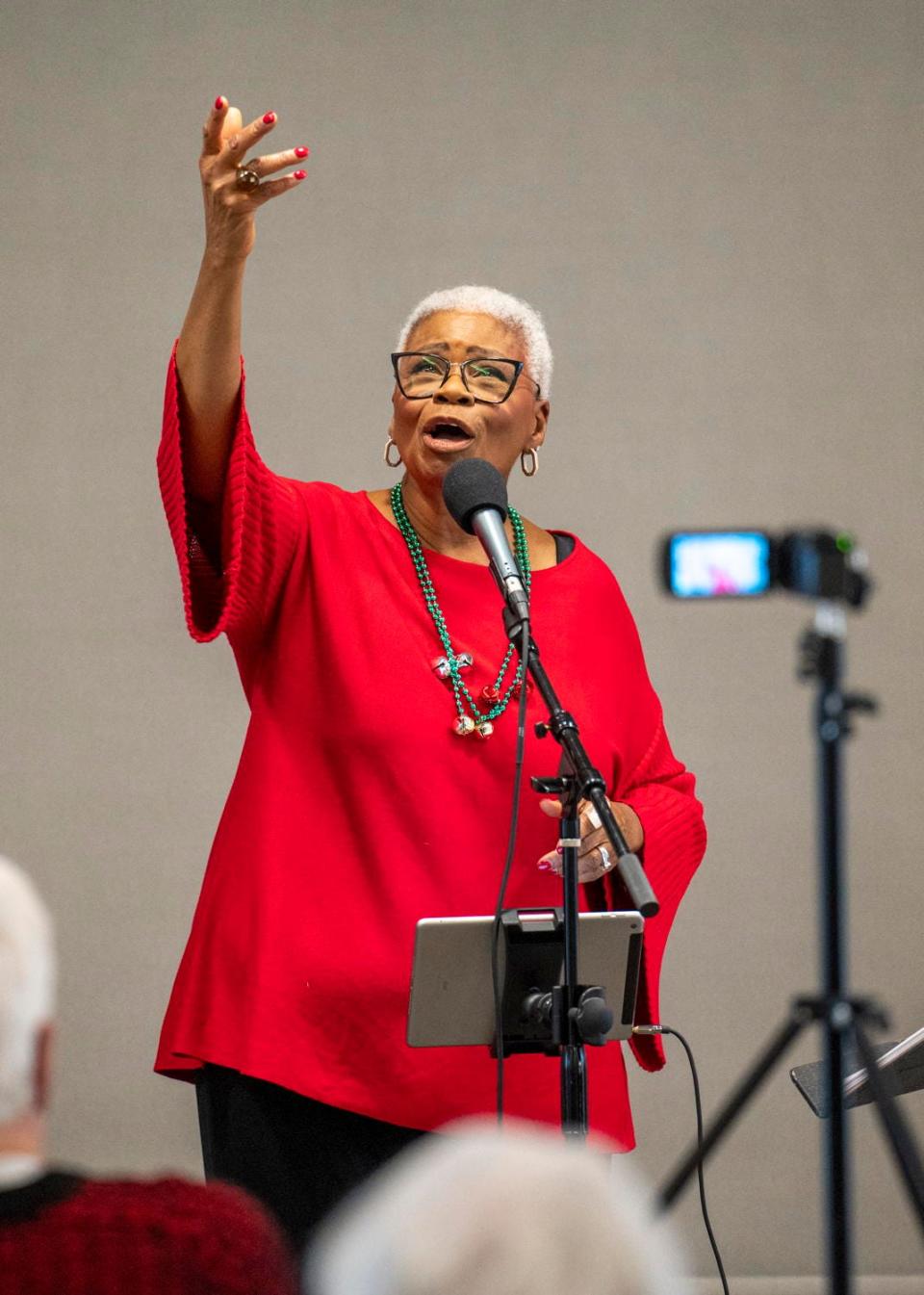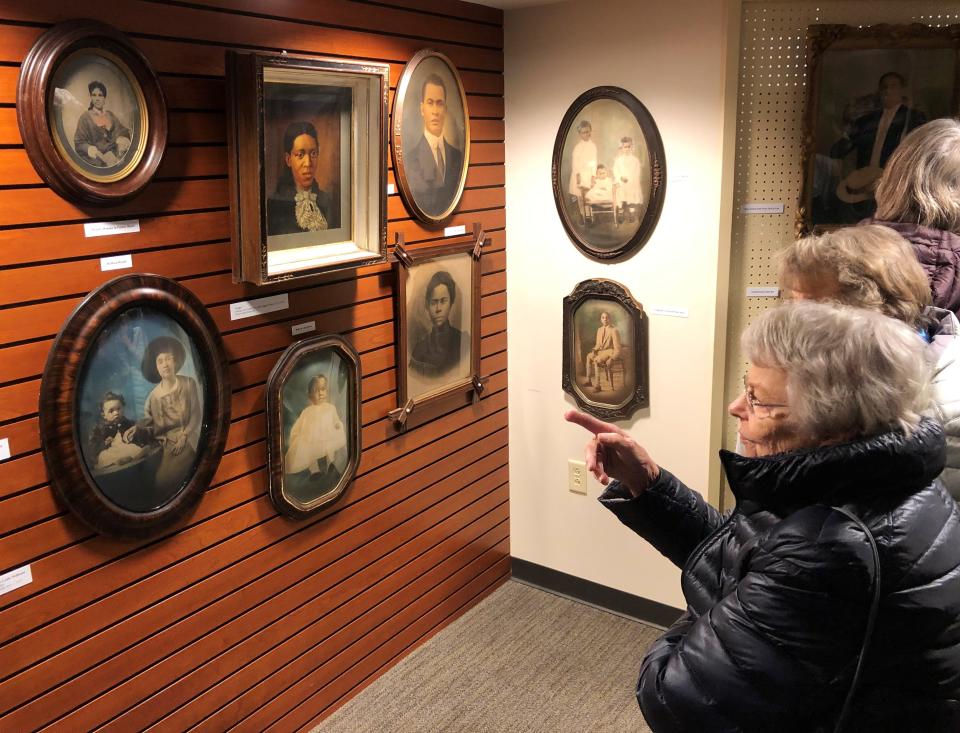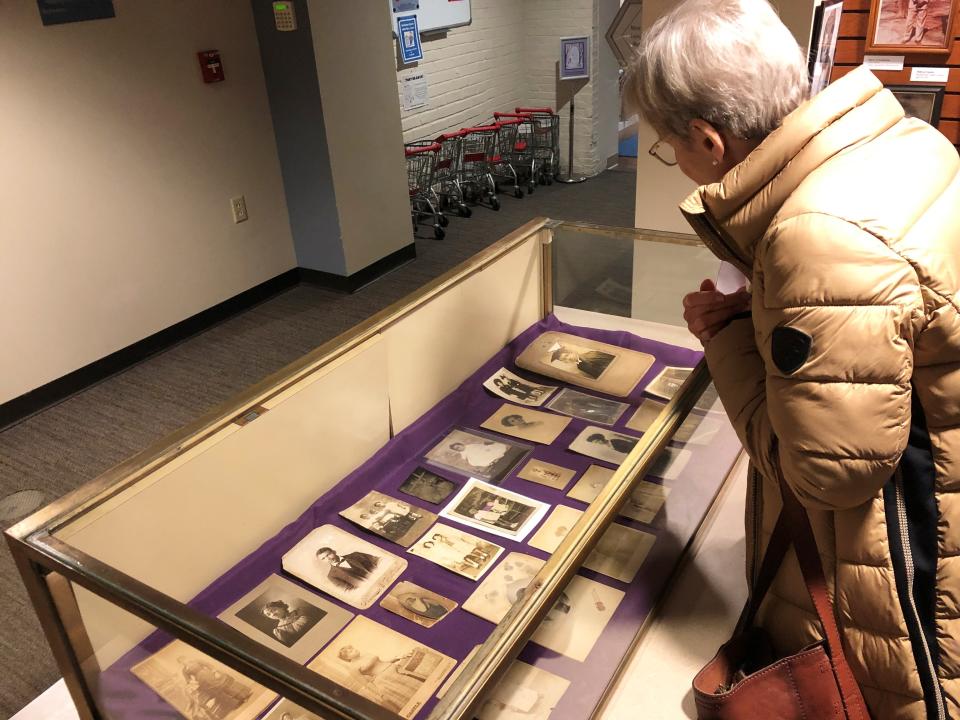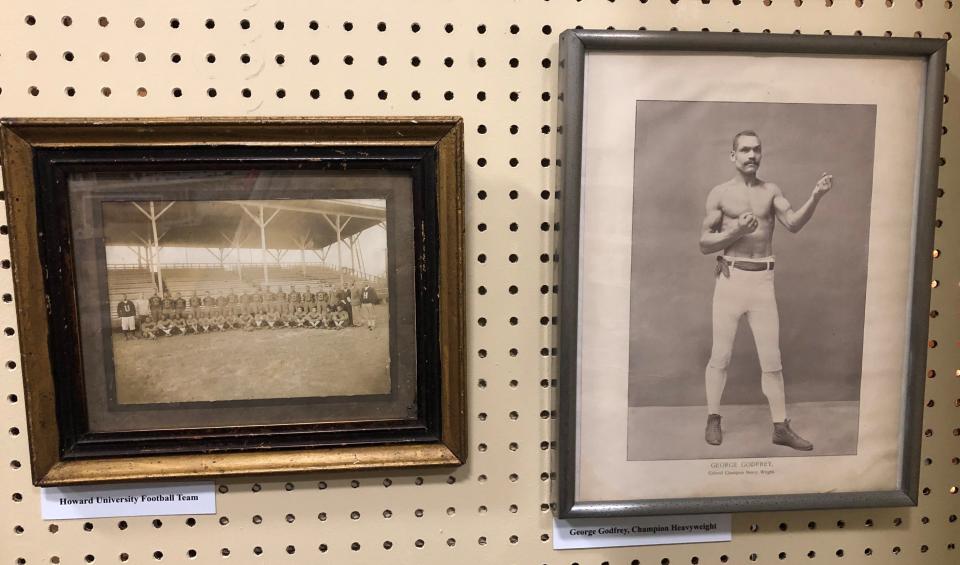‘I don’t want to lose this': Rescued African American portraits on exhibit in Canandaigua
CANANDAIGUA -- When Connie Fredericks-Malone looks into the faces of the African American people portrayed in the images she and her husband Jim Malone have collected over 40-plus years, she sees her ancestors.
Others may see a Civil War soldier holding a weapon and looking off to the side. Others may see a little girl in a fancy gown, her whimsy brimming as her bare feet are slightly exposed under the hem of her white dress.
But Fredericks-Malone sees the pride on their faces. She sees the joy and she sees the determination on their faces.
And, Fredericks-Malone said she sees a reflection of herself and of the determination that existed in her own family.

“What I see is what I know about my people. We are strong, we are determined, even against incredible odds, we still rise. We will always rise and we will do it with dignity and grace,” Fredericks-Malone said. “I see the history of my country. I see the things they say we were not.”
Their “Fierce Determination: Moving Forward with Grace and Dignity” exhibit at Wood Library showcases some of the African American photographs and portraits in the Canandaigua couple's collection. The exhibit runs through the end of the month.
The images in their collection depict all sorts of people, from a time period beginning around the Civil War era to the 1920s, ‘30s and ‘40s.

Frequently, images of marginalized Black or brown people in the media or on TV shows -- or the crime reported in the media – are historical depictions showing people in slavery or poverty, in limited conditions, Jim Malone said.
With a nod to W.E.B. DuBois, an African American social reformer who presented a series of positive Black images at the 1900 World's Fair to push back against ignorance and prejudice, they wanted to show the other side of the coin.
“Our thought was, that there are many Black folks who despite all of the oppressions that they face, do move forward with dignity and grace and they do achieve things in life," he said. “They can have families. They can be employed. They can make contributions. They can dress well. There are many people who work very hard who take advantage of opportunity and they do advance.”
The pictures prove it.
This is why they collect
The couple met 44 years ago and when they started dating, he would take her to antiques shops, Fredericks-Malone recalled. She figured she’d better find something to collect, something personal. And she happened on images of African American people.
Many of the images she had seen before were derogatory in nature, mainly of people in servitude.

“Not what I was accustomed to seeing in our home,” she said.
Her parents, Mildred Shields and Harry Fredericks, whose father came from St. Kitts and Nevis, thrived in Springfield, Massachusetts, early on during their marriage. After Mr. Fredericks’ death in a construction accident, Mildred – who eventually became the first Black teacher to integrate the West Springfield school system – remarried a man, Hughan Williams, from Jamaica.
They had a blended family of nine kids, who have since become accomplished in the arts – Fredericks-Malone is an accomplished vocalist; her award-winning brother performs as blues artist Taj Mahal; and sister Carole is a mega star in the French speaking world -- and other pursuits.
Their fierce determination led to lives of grace and dignity, Jim Malone said, and their family's portraits are included in the collection..
“Her family exemplifies that,” he said.
Rescue work
Fredericks-Malone admits it’s a strange experience when you visit an antiques shop or show and you see other people’s baby pictures and wedding pictures and other personal things and you say, what happened to that family? Where are they now?
Why are they forgotten?
“When I would find these pictures of Black people just being gracious and dignified and beautiful and wonderful, I just said, ‘I don’t want to lose this. I’m going to keep this,’” she said.
As every collector knows, once you find one item, all of a sudden, your eye can start to pick up other items and you start to find them in the oddest places.

And you don’t stop.
In addition to finding some portraits in France, they have discovered images all over the U.S., from California to the South.
“It became a passion for me and an obsession to find these wonderful things,” Fredericks-Malone said. “The Black images were always precious to me. When we would find one, it was just a precious acquisition.”
Some are straight-out photographs. Some are tinted. They do consider the condition of the work before acquiring it, and they have passed on some prints because they were damaged.
Most of the time, they just had to have it.
“When I would find these pictures of Black people just being gracious and dignified and beautiful and wonderful, I just said, ‘I don’t want to lose this. I’m going to keep this,’” she said.
Who are these people?
The images do create questions in one’s mind, Jim Malone said.
Who were they? Where did they come from? How old were they? What was their social class? Where did they work?
Why is this portrait in an antique shop and not displayed proudly on someone’s mantel?
“It sounds sentimental but whenever you go to an antique fair or a show, and you’ll see a family album, Black or white, you’ll see a whole collection of portraits and pictures,” he said. “There’s kind of a sadness that the heirs or extended family didn’t have those. They ended up being lost.”
Sadly, many of the people in their portraits are anonymous, although in some cases they have tried to put a name to the face, without much success.
For instance, on the back of a nicely framed oil painting was a name, which they looked up.
After some research, they discovered the painting was found in a pharmacy store owned by a judge in Kentucky in the 1950s. They came up with some families who may have been associated with the work’s subject.
“She might have been, we’re not sure, a freed slave who was working for this family,” he said. “It’s not likely a slave would be painted. She might have been a freed woman.”
Theories abound, but no name.
In fairness, most of the time, they have no clues to work from, unlike this case.
“They’re very difficult to trace without a name,” Jim said.
But they all can be appreciated, even in anonymity.
History lessons in art
They have more portraits; oh, do they have more.
“You just collect,” Fredericks-Malone said. “Then one day, you look around and say, ‘Holy mackerel!’”
The Wood Library exhibit is only a portion of the collection. They really didn’t know what they had until they were asked to put on a show at a Genesee Country Antique Dealers Association show fairly recently.
Seeing them all on display, in varying shapes and sizes and from different eras, they came to a realization.
"We had collected something very special and very unique,” she said.
Certainly, they see value in sharing them.
Seeing portraits from Emancipation to Reconstruction to the Jim Crow era, you know the subjects experienced hard times, Jim Malone said.
Malone hopes those who view the portraits become curious, too, and want to learn more of the past, perhaps a history they are uncomfortable or unfamiliar with: “You think of the world that they lived in.”

But the uplifting side is seeing depictions of a Black middle class and people who have achieved some degree of wealth. Their fierce determination comes into play in each instance.
“The real fascination is the fact that in the early century and early ‘20s, when times were harder, and barriers were more severe, is to see people who appear to have reached a level of if not economic at least lifestyle class,” Jim Malone said.
It’s a history lesson.
For these people to have been able to sit in front of a camera or to sit for a portrait during sometimes very oppressive periods, Fredericks-Malone said, they were shining a little seen light on their lives, for their families and for others.
It’s like they are saying, Fredericks-Malone said, “You know what? We are dignified. We are not your stereotypes. We are strong. And this is our way of documenting it.’”
To see the portraits
Connie Fredericks-Malone and James Malone's Fierce Determination: Moving Forward w/ Grace and Dignity Exhibition is on display now through Feb. 28 during Black History Month at Wood Library, 134 N. Main St., Canandaigua.
This article originally appeared on MPNnow: Canandaigua couple's photo collection part of Black History Month

